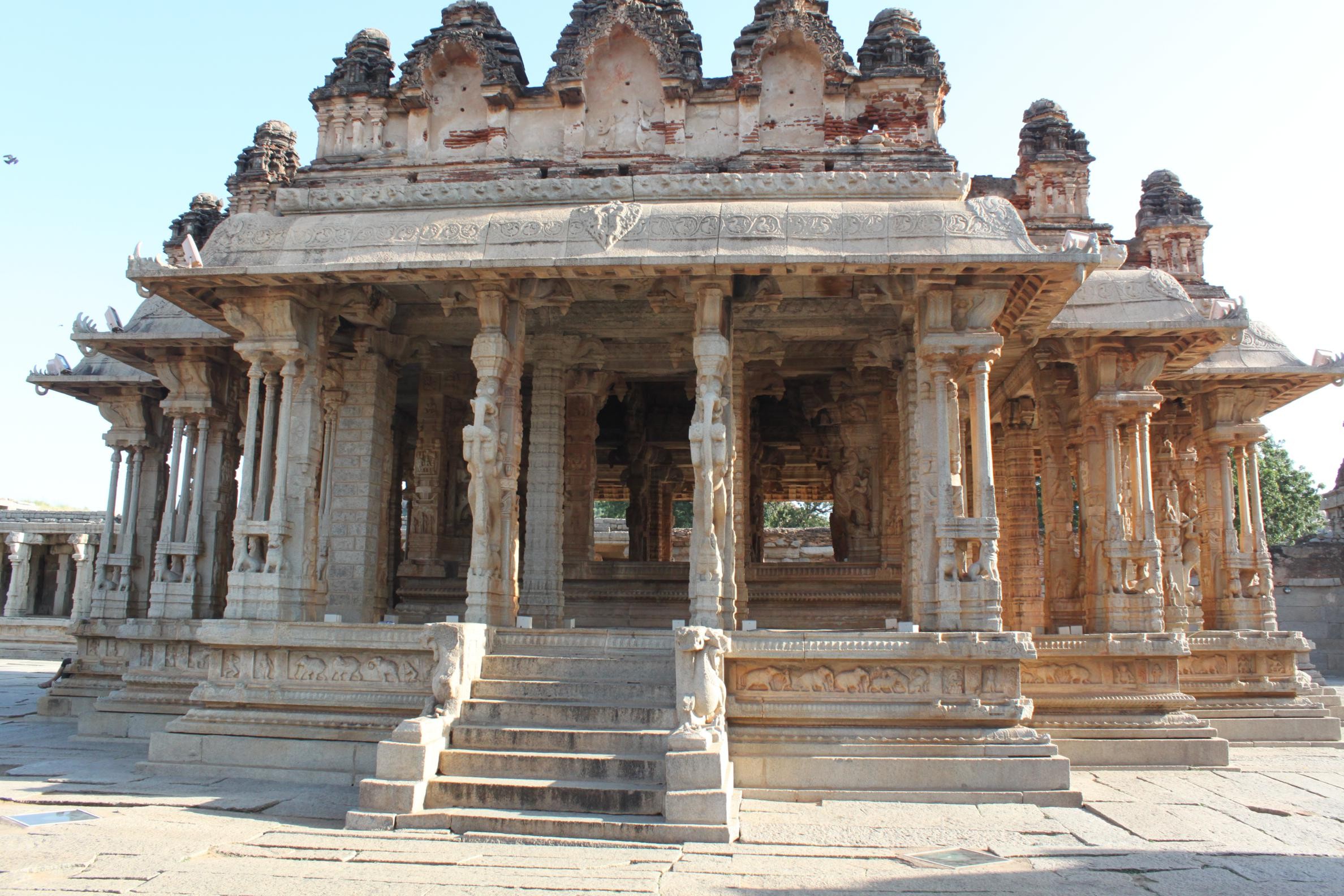What is the Chidambara Rahasyam (Chidambara’s Secret)? Why don’t the black scorpions at Somnath temple sting the devotees? How does the mango tree at Amba Sahib Gurudwara produce mangoes through the year? some are archeological marvels like the hanging pillars of Lepakshi! These and many more mysteries have always fascinated people. Some believe it to be mere myths, while many think the contrary. There many shrines in the country that have mysteries that even science cannot explain.
Religion World will look deep into these mysteries that have shrouded the age-old temples in the country and will present a series on these temples, their mysteries and the reason behind all these starting with the fascinating and Mysterious “Musical Pillars” of the Hampi in Karnataka.

The Indian temple architecture has always been a source of pride for India. Epecially the stone antiquities of the South are imprinted with the craftsmanship of ancient artisans. They have been a source of awe and mystery for centuries. The Vijayanagara kingdom, once the richest empire in the world, produced outstanding architecture. And Hampi is a fine example of the architectural craftmenship of the Vijayanagara Kingdom. The one temple which stands among out among the rest in Hampi is – The Vittala Temple, which is believed to be built in the 16th century, houses one of the biggest mysteries of Indian Temples. Inside the temple, there are 7 minor pillars which surround a major pillar and all the 7 pillars produce sounds when they are tapped.

Each of the pillars represents a musical instrument and the sounds emitted by them depend on the kind of instrument they represent – either wind, string or percussion instrument. The Britishers, being amazed by this archaeological wonder, wanted to know the reason behind the same. As a result, they cut two pillars to check their insides but found nothing. The devotees and visitors can still see those pillars in the temple.
The Vittala Temple

The Vittala Temple in Hampi is an ancient structure, which is well known for its architecture and unmatched craftsmanship. The monument is seen as one of the largest and famed structures in the group of monuments in Hampi. The temple is located in the northeastern part of Hampi near the banks of the river Tungabhadra.
History
The structure was built during the rule of Devaraya II, who was one amongst the rulers of the Vijayanagara Empire. The structure was built in the 15th century. Many portions of the temple were expanded and enhanced by Krishnadevaraya, who was the most famous ruler of the Vijayanagara dynasty. The temple is also called Vijaya Vittala Temple and is dedicated to Vittala, an incarnation of Lord Vishnu. According to legends, the temple was built as an abode for Lord Vishnu in his Vittala form, but he found the temple to be a very grand one for him and hence he is said to have returned to live in his own humble home at Pandharpur.

The Architectural Marvel The Vittala temple is assumed to be the grandest of all the temples and monuments at Hampi. The temple showcases the immense creativity and the architectural expertise, which was possessed by the sculptors and artisans of the Vijayanagara empire. The temple is built in the Dravidian style of architecture, which speaks volumes about the grandeur of the south Indian temple architecture, with elaborate carvings that is unmatched to the other structures in the town. The main shrine originally had an enclosed Mantapa and an open Mantapa or hall was added to the structure in the year 1554 AD. The temple is spread across a large area with high compound walls and three tall gopurams. The complex also has many halls, shrines and pavilions within its circumference. Among the structures, the Devi shrine, Maha Mantapa or the main hall, Ranga Mantapa, Kalyana Mantapa, Utsava Mantapa and the much famed Stone Chariot are the notable ones. The Stone Chariot, which stands tall in the courtyard of the temple, is one of the most stunning architectural wonders and is also one of the three famous stone chariots in the country. The other two chariots are located in Konark and Mahabalipuram. The stone chariot is a shrine which was designed in the shape of a chariot. This chariot shrine is dedicated to Garuda – the carrier of Lord Vishnu, and one can find an image of Garuda housed in its sanctum.
The Musical Pillars
The large Ranga Mantapa is well known for its 56 musical pillars. These pillars are also known as SaReGaMa pillars, which are attributed to the musical notes emerging out of them. The musical notes can be heard when the pillars are gently tapped. One can find a set of main pillars and also several smaller ones at the mantapa. Each pillar provides support to the ceiling of the mantapa, and the main pillars are designed in the manner of musical instruments. Every main pillar is wrapped by 7 minor pillars and these minor pillars emit different musical notes. Every note coming out of these pillars vary in their sound quality and also change as per the percussion, string or wind instrument being played. When hit with sandalwood sticks, they produced rhythmic sounds close to the Saregama. Although the reason for their design is unknown, they continue to intrigue onlookers for centuries.

The geological analysis of these pillars reveals that the rocks are resonant not only because of the presence of metallic ore but also because of the large amounts of silica. While the Mughal invaders charred the stone pillars with fire for months, thus reducing its decibels greatly. While during the British era, two of them were cut to check if there was something else producing the sound inside. But they turned out to be hollow. And the Mystery of Musical Pillars at Vittal Temple, Hampi is unsolved.
The ruins of Hampi, as it is known today, is a vast open museum of history, architecture and religion. It is spread over an area of more than 25 square km, and is packed with temples, palaces, market streets, fortifications, aquatic structures and an abundance of ancient monuments. The giant boulders strewn hills and the river that bisects, make the landscape beautiful. It is a perfect tourist spot, and is on the list of UNESCO’s World Heritage Sites.









